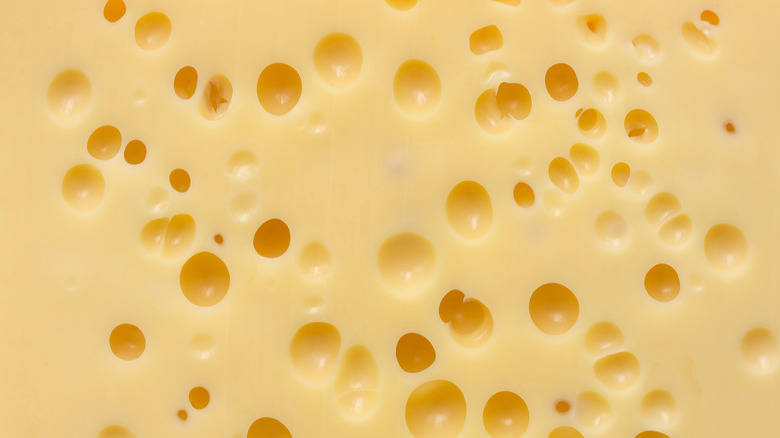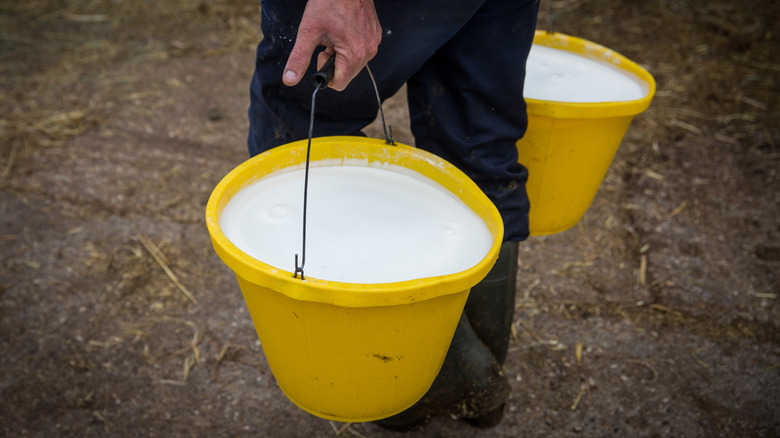The Scientific Reason Swiss Cheese Has Holes
It's not easy being cheesy, especially when everyone loves the stuff so much. Cheese is the star of many dishes, from the ultimate grilled cheese and simple mac and cheese to New York-style cheesecake and even a classic charcuterie board. But there's one type of sweet, mild, and nutty cheese, and it's essential in Chicken Cordon Bleu. If you guessed Swiss cheese, you're right! While it may not be quite as popular in the U.S. as cheddar, it's still up there, and its main quirk is the mysterious holes that lace each slice.
According to Undeniably Dairy, holes in Swiss cheese are formed through the release of carbon dioxide. While this has been the primary explanation for years (and it may burst the bubbles of those who believe that the holes are the result of mice eating their way through blocks), further research shows that the buckets for collecting milk may be part of the answer.
Hay dust in milk buckets
According to the BBC, new research has found that the cleanliness of the buckets transporting milk is a tell-tell sign of how many holes will be present in that batch. The Swiss government agricultural institute Agroscope found that in the beginning stages of processing, when the milk is collected, tiny hay particles would often fall into the buckets transporting the milk. These microscopic flecks of hay are the actual culprit for holes in Swiss cheese, and larger holes develop around them as the cheese matures.
While the study has not yet been peer-reviewed, the scientists tested their theory by adding hay dust to milk during processing, which they made into Swiss cheese over 130 days, and the cheese they produced had more holes. They concluded that due to recent improvements in milking methods, flecks of hay are less likely to seep into milk buckets, causing a decrease in holes in Swiss cheese over the past 15 years. Only two varieties of Swiss cheese have the signature holes, the Emmental and Appenzell.

